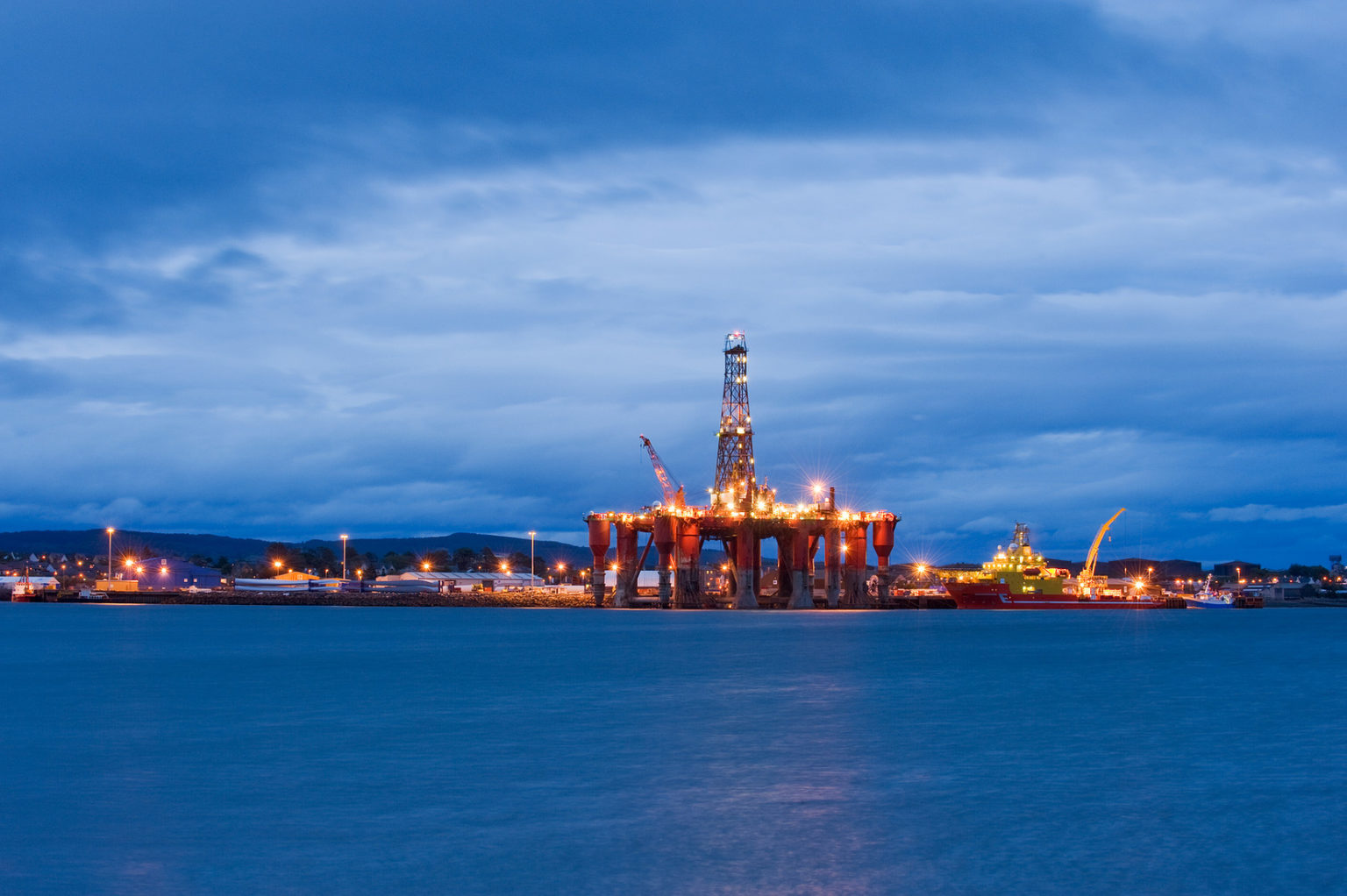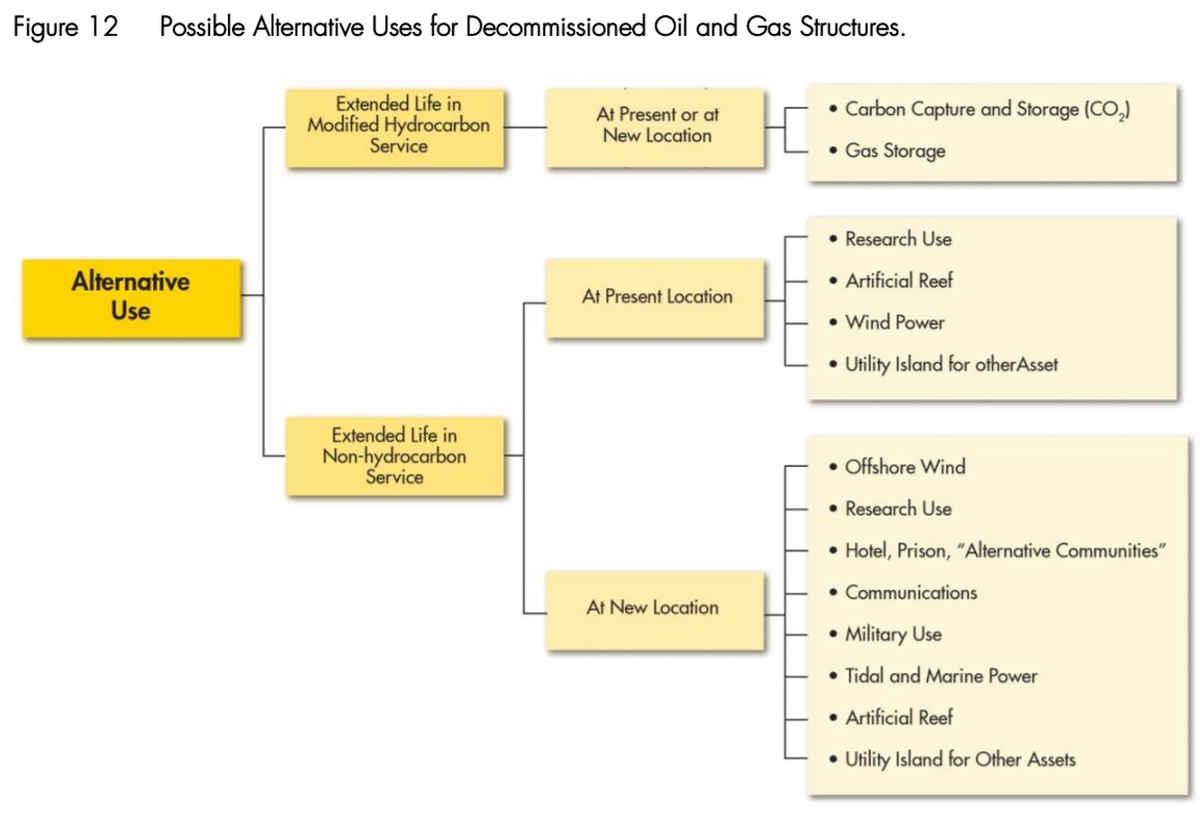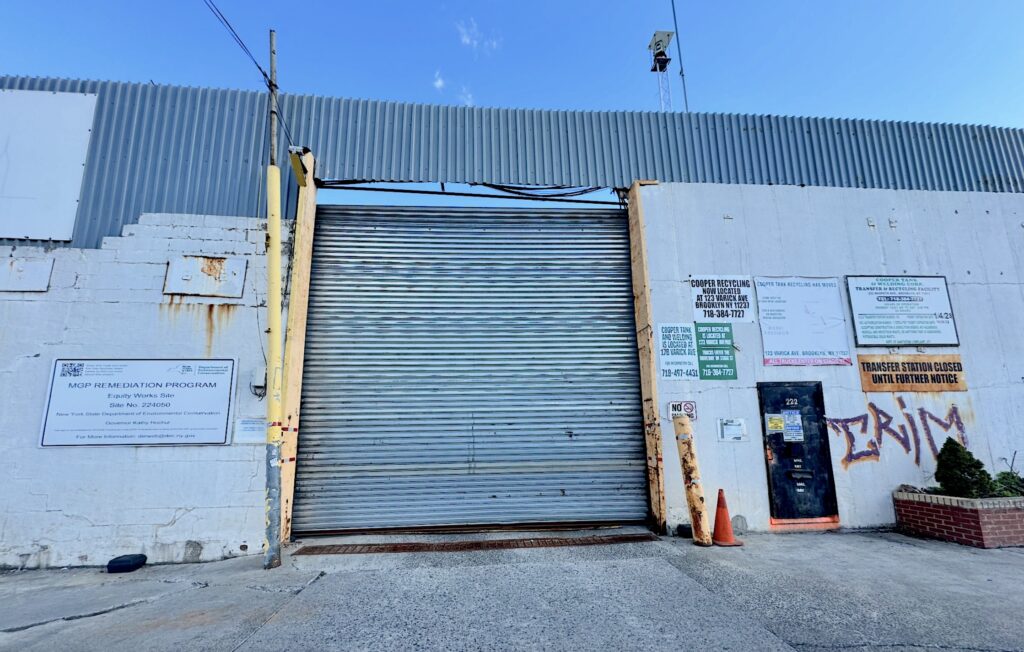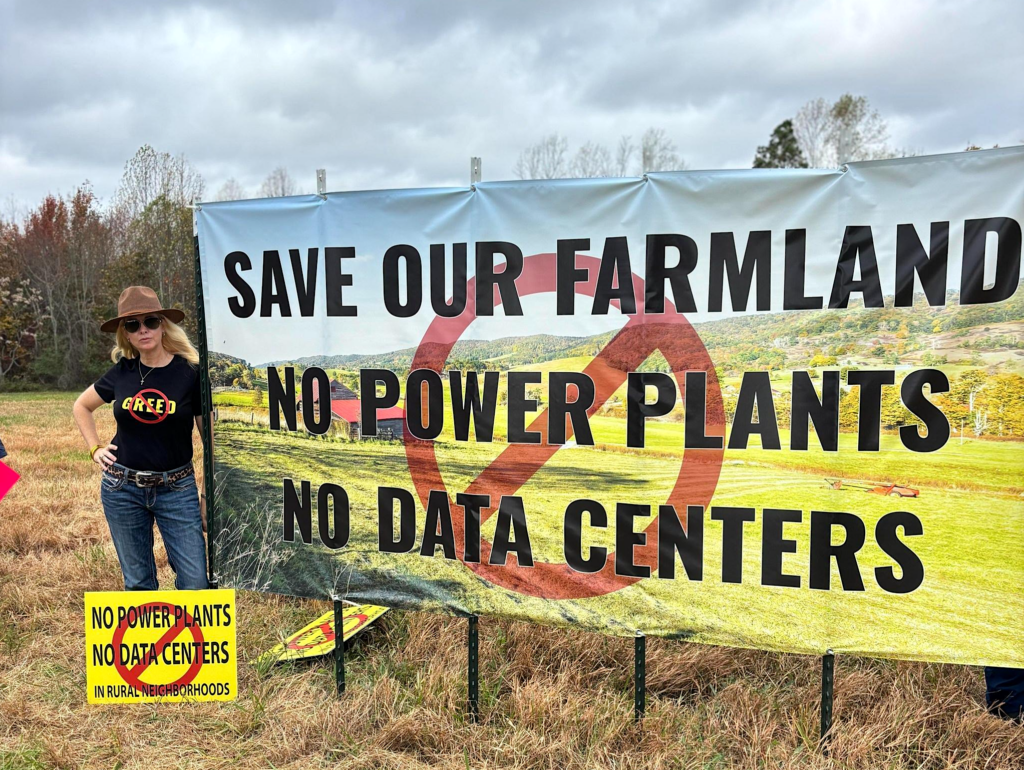The famous Brent oil field is dead, but is it buried? After ten years of study, Shell has found that the once-productive field, sucked dry of its resources, is not all that useful after the oil has run out.
After several decades of oil extraction, Shell now has the challenge of cleaning up its debris. As it prepares to decommission four rigs from its Brent oil field, Shell considered various ways to give its North Sea facilities a second lease of life: clean energy, fake reefs, hotels and carbon capture were all thrown into the ring as possible ways to reincarnate the rigs.
Shell looked at 35 alternative ways to put the tired rigs to use, which it eventually narrowed down to ten more serious considerations. But in the end, Shell decided to remove most of the structure, while leaving other bits to crumble on the seabed over time.
Shell extracted its first drops of oil from the Brent Field in the North Sea in 1976. Since then, the four platforms – Alpha, Bravo, Charlie and Delta – have been responsible for around four billion barrels of oil, or almost 10 percent of the oil and gas produced from the UK’s section of the North Sea.
Shell, alongside its partner ExxonMobil in the form of Esso, released details of its decommissioning programmes this month outlining how they plan to wind down its facilities and dispose of these giant structures, made of thousands of tonnes of steel and concrete – a process that could end up emitting around 800,000 tonnes of CO2, further contributing to climate change.
Image: Diagram exploring alternative uses from Shell’s Brent oilfield decommissioning consultation document
Carbon Capture and Storage
Only one potential alternative use for the Brent facilities was given serious consideration. Shell came under pressure from independent reviewers to assess whether the Brent field and its platforms might be suitable for carbon capture and storage (CCS), and conducted studies on the option.
CCS is a nascent method of tackling climate change, where emissions are buried underground instead of being allowed to disperse into the atmosphere.
But Shell ultimately concluded that the old Brent facilities would not be suitable for this purpose.
It notes that the Brent Field is too far from the sources of the CO2 it would try to capture, and that a new pipeline around 450km long would need to be constructed to transport the gas. Around 90 percent of the facilities would probably need to be replaced to convert the site into a suitable location for CO2 storage, Shell told stakeholders in 2009.
In addition, Shell concluded that the reservoir itself, drilled with hundreds of holes would not be suited to CCS. “They are a bit like a pin cushion, which is not ideal,” John Shepherd, emeritus professor of earth system science at the University of Southampton, told DeSmog UK. Shepherd chaired the Independent Review Group of scientists that Shell pulled together to examine and review its conclusions.
Shell concluded that it is unlikely that the volume of CO2 required to make the scheme commercially viable could be stored within the rock.
Shepherd said: “While it probably wouldn’t have been impossible to use it for CCS, there are a lot more attractive options closer inshore that you would probably use first…We felt they’d done a reasonable job of exploring this, and that their reasons for saying CCS is not an attractive option for this were coherent and sound.”
Removing the facilities from the Brent field itself doesn’t necessarily spell the end of CCS in the Brent reservoir. But Shell says that such an operation would only make economic sense if the necessary infrastructure was built from scratch – and that further detailed studies would be required before pumping emissions into the depleted oil field.
To date, Shell has yet to bury any of its decades of emissions in the depleted reservoirs it has left beneath the North Sea, though not necessary through lack of trying. The company was working on the Peterhead project, which would have seen CO2 captured in its Goldeneye gas field, but the project was abandoned when the UK government cancelled its £1bn CCS competition six months before it was due to be awarded.
More Energy
When is a dead oil field not dead? When there’s still a few drops left and you have the technology to wring it dry.
Shell considered enhanced oil recovery (EOR), a process of squeezing the residual oil out of a field through various techniques, including the injection of CO2. That would allow Shell to use its old Brent facilities to boost its operations elsewhere.
But Shell rejected this idea. According to a presentation made to stakeholders back in 2009, EOR would require massive capital investment, including more than 100 new wells and more than £700 million to modify the facility.
What about wind or wave power? Again, Shell concluded that the costs were prohibitively high. The same presentation estimates that the maintenance and operating costs of one fully manned platform would be around £25 million per year. Its four platforms may also not be the most efficient place for such projects, it adds, since higher yield sites exist closer to shore.
Shepherd said: “Wind farms are no use unless you’ve got a cable to take the electricity so they would have to install a 100-mile-long cable, which would not be all that cheap.” In a 2009 report to stakeholders, Shell concluded that the costs and size limitation make reuse opportunities for alternative energy “non-viable”.
It is perhaps unsurprising that Shell has taken this stance – it is a line that it has taken before, announcing in 2012 that it could make the numbers add up on offshore wind. If its attitude is changing, then it is happening slowly; Shell UK chair Sinead Lynch told Bloomberg on Tuesday that Shell is “looking long and hard at how we might build a business in offshore wind”.
Artificial reefs
Shell considered using the old Brent facilities to create artificial reefs in the North Sea, but this too was rejected. Shell’s basis for this decision? Research from the 1980s and 1990s, a raft of international regulations, and lack of support from European fishermen.
The idea is unusual, but no longer revolutionary. Around 470 platforms have been converted into reefs in the Gulf of Mexico, and the US has had a National Artificial Reef Plan since 1984. Scientists have pointed to the role of abandoned rigs in creating a valuable home for marine life, giving corals an anchor in the otherwise smooth ocean floor.
Yet the idea remains untested in the North Sea, and it is controversial among environmental campaigners. Some have argued that oil companies should fulfil their obligation to leave the seabed clean after operations are complete, and that anything else amounts to an attempt to wriggle out of the costs of cleaning up after themselves. Lang Banks, director of WWF Scotland, told DeSmog UK:
“Oil and gas companies operating in the North Sea have a legal, as well as moral, obligation to clean-up their mess. Having once pushed the boundaries of science and engineering to secure the oil and gas beneath the seabed, the industry should show the same innovation when it comes to decommissioning.”
Regulations by the Oslo-Paris Commission (Ospar), an organisation with jurisdiction over the North Sea, that prevent the use of oil rigs as the basis for artificial reefs were borne of a 1995 Greenpeace campaign against the disposal of the Brent Spar facility in a deep-water trench.
Shell is now pointing to this regulation as one of the reasons it will not be converting the Brent facilities into artificial reefs. To do so, it would have to take the old rigs onshore for cleaning – an ordeal that would negate the potential safety benefits and costs that Shell would gain by leaving them in place as new reefs, according to its decommissioning programme.
Banks added: “The OSPAR agreement is there to make sure the marine environment is protected and should be followed. The rules already allow for companies to seek permission to leave some material behind – such as the massive concrete legs – where moving it would pose an unacceptable risk to staff or the environment. WWF accepts this principle and will be looking to ensure the decommissioning of the Brent platforms is done within the rules set by OSPAR.”
Shell also said in its Decommissioning Programmes that creating artificial reefs in the North Sea would have only minor benefits. This is based on research conducted in the late 1980s and early 1990s, as well as a more recent study commissioned from Mackay Consultants on the socio-economic impacts of Brent decommissioning on fisheries.
The Mackay study found that “no positive effects” were foreseen in creating artificial reefs from elements of the facilities. The environmental statement accompanying the Decommissioning Programmes also points to one 2008 study showing that around 200 colonies of Lophelia pertusa – a protected species of coral – are found on the concrete and steel jackets of the platforms, but that they are not considered “of significant conservation interest” by conservation bodies.
Scientifically, this subject has been “a bit of an unknown area” since the 1990s, according to Shepherd, although a new industry-sponsored programme called INSITE is in the initial phases of examining the impact of manmade structures on the ecosystem of the North Sea.
Milton Love, a marine biologist at the University of California, who has studied the benefits of turning rigs into reefs in the state, told DeSmog UK that research in the UK was behind that of the USA. He said:
“There have never been any studies similar to ones my lab has conducted – where we surveyed entire platforms and then compared that to surveys conducted over the same period on nearby natural reefs. Given that this kind of research has not been done I have long felt that it is problematic to make any overarching statements regarding the role that platform fish (or invertebrate) assemblages might play in the North Sea.”
Prison, Hotel, Research Station?
Shell also gave momentary consideration to some more off-the-wall ideas, including converting the abandoned facilities into a prison or a hotel, or a marine research station.
Nothing like this has ever been undertaken on the UK continental shelf before – although 147 employees of Maersk Oil make their home on a converted rig in the Danish part of the North Sea.
But Shell decided, once again, that the costs involved in undertaking such a project would render it unviable. The Decommissioning Programmes state:
“Put simply, the costs of maintaining and running ageing platforms for alternative uses would be too high, and any extension of useful life would just delay the eventual decommissioning.”
It’s not just issue of costs. There is also the fact that the North Sea has yet to make its way onto lists of most desirable holiday destinations.
Shepherd said: “To be honest, I don’t think there is the commercial demand. I would be astonished if you could make a credible business plan. There are not enough nutcases in the world to make it viable.”
Main image credit: Berardo62 via Flickr CC BY–SAFlickr CC BY–SA
Subscribe to our newsletter
Stay up to date with DeSmog news and alerts








